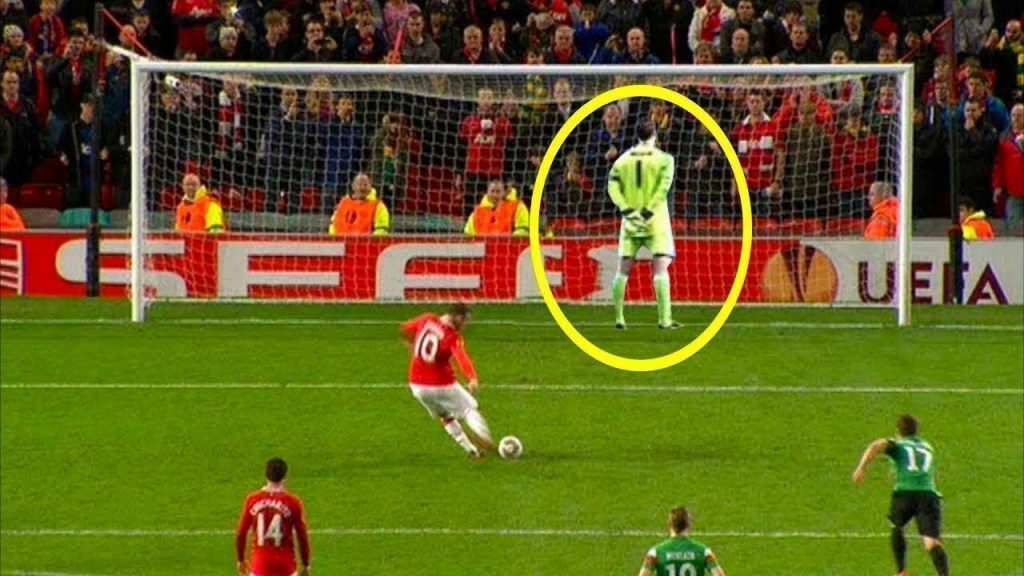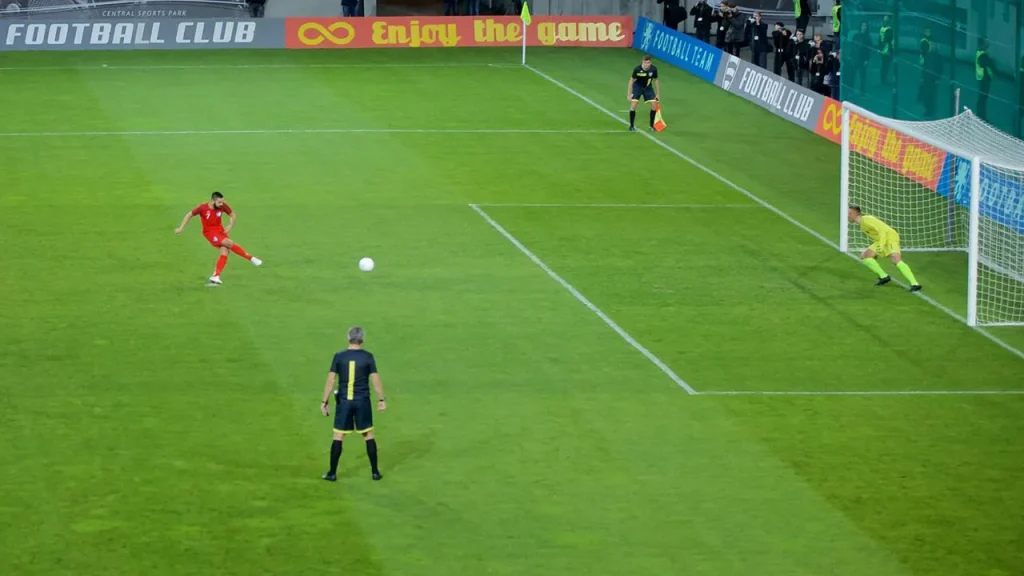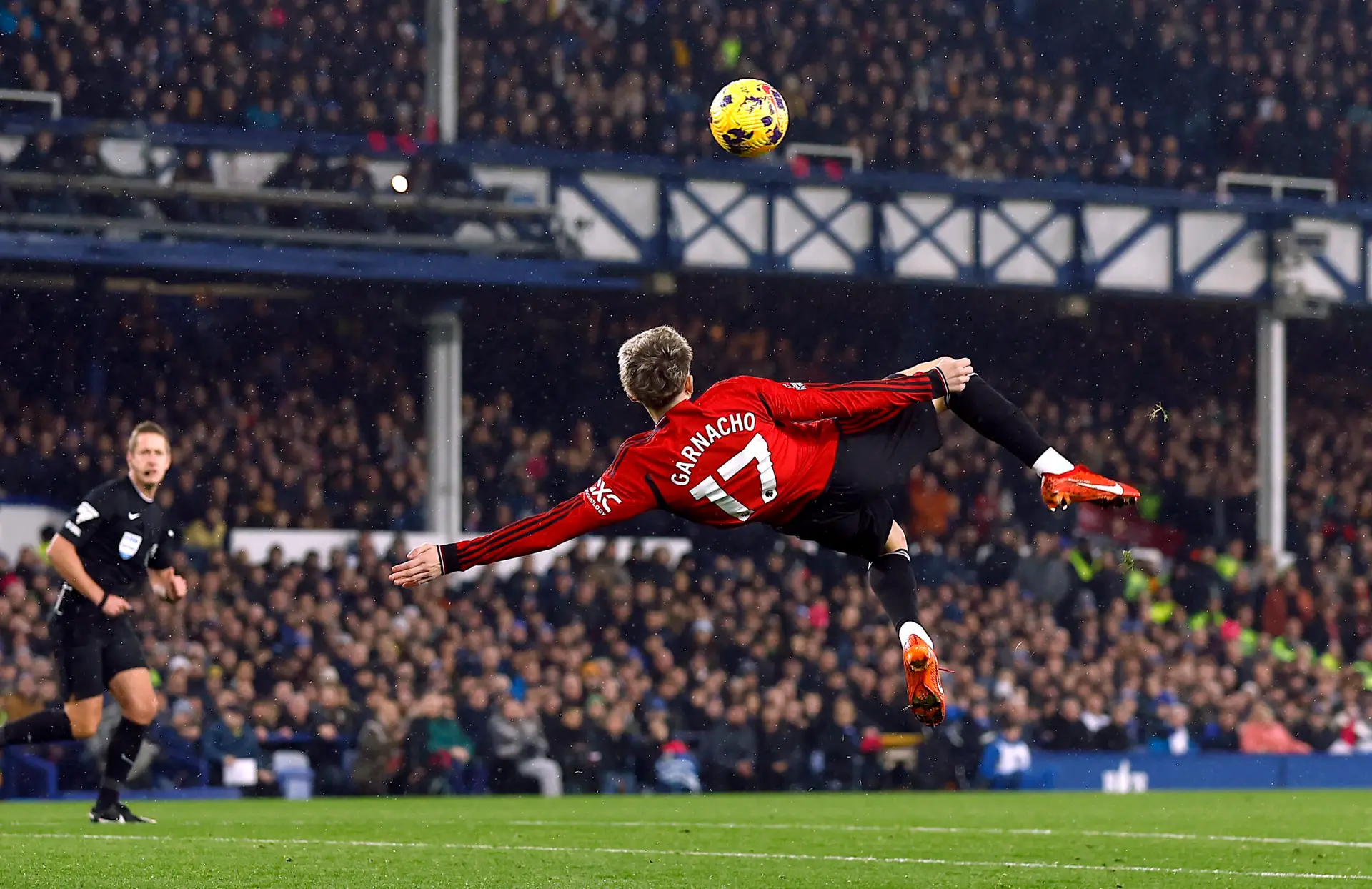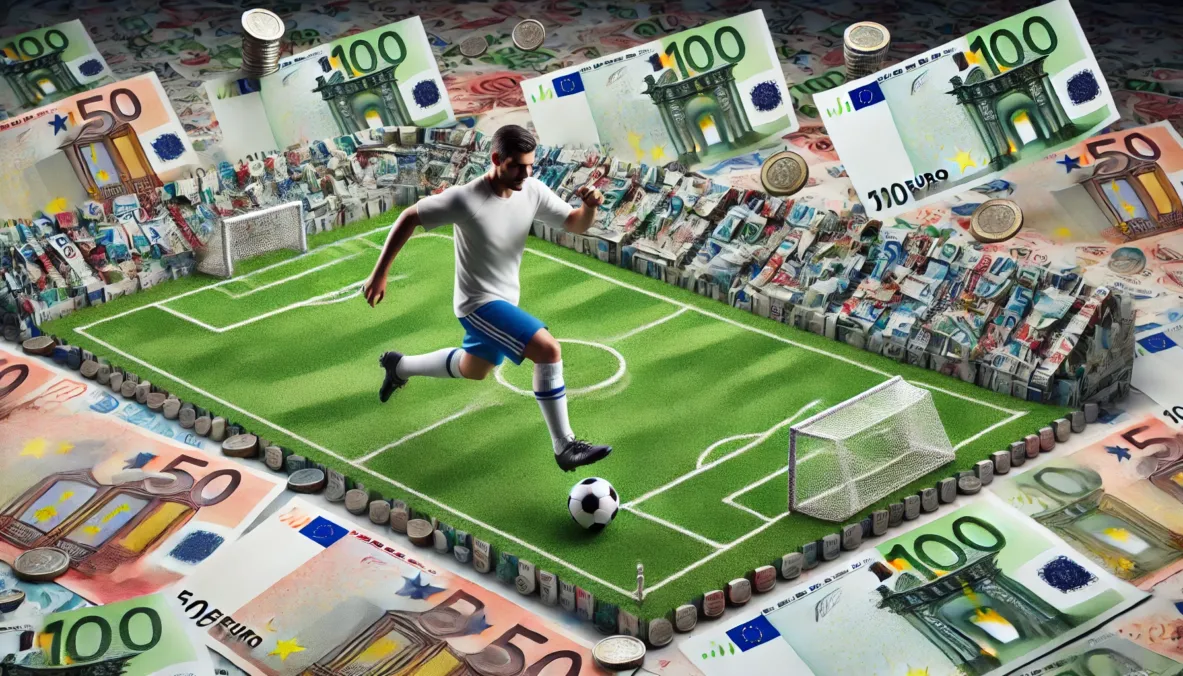What is a penalty kick in football is a question that interests all football fans. It is a kick from the eleven-meter mark that the referee awards for a violation of the rules inside the defending team’s penalty area. This element of the game reflects a strict measure of punishment for a foul that deprived the attacking team of a scoring opportunity. The term “penalty” comes from the English word “penalty.” Initially, penalties were not included in the basic football rules, but the need for such a measure arose with the increase in the pace of the game and the number of fouls in the dangerous zone.
According to the current FIFA rules, a penalty kick is awarded if a defending player commits one of eleven rule violations (pushing, handball, tripping, etc.) within their penalty area. The violation is only recorded during active ball play and only if it affected the course of the attack. The referee points to the spot, gestures to indicate the penalty kick, and the goalkeeper must remain on the goal line until the kick is taken.

What is a penalty kick in football: where is the spot and how is the kick taken
To understand what a penalty kick in football is, it is important to understand the technical side. The spot is located exactly 11 meters from the center of the goal, which by standard measures 2.44 meters in height and 7.32 meters in width. The kick from the eleven-meter mark is strictly taken on the referee’s command, and until that moment, no one except the goalkeeper and the kicker is allowed within the penalty area, arc, and 11 meters.
The kicker chooses the side, power, and trajectory of the kick. The goalkeeper can move along the goal line but is prohibited from leaving it prematurely. Premature movement is detected by the VAR system or the assistant referee, and if the rule is violated, the kick is retaken. After the kick, players cannot follow up if the ball rebounds off the crossbar or goalkeeper – the game is stopped.
The psychological and technical weight of penalty kicks
 Understanding what a penalty kick in football is impossible without analyzing its impact on the psychological state of the participants. At the moment of the kick, the player is under pressure not only from the result but also from the multimillion audience. On average, goalkeepers guess the direction of the kick in 57% of cases, but only successfully save the ball in 18% of cases. Even top performers miss – for example, Cristiano Ronaldo has a penalty conversion rate of around 83%, Lionel Messi – 78%.
Understanding what a penalty kick in football is impossible without analyzing its impact on the psychological state of the participants. At the moment of the kick, the player is under pressure not only from the result but also from the multimillion audience. On average, goalkeepers guess the direction of the kick in 57% of cases, but only successfully save the ball in 18% of cases. Even top performers miss – for example, Cristiano Ronaldo has a penalty conversion rate of around 83%, Lionel Messi – 78%.
Players choose one of the strategies before the kick: a powerful shot in the center, a shot to the corners, or a deceptive move with a feint. Success depends on composure, kicking technique, timing. Often before a penalty kick, players simulate calmness, but the adrenaline level in the body at that moment is comparable to an emergency situation.
Historical milestones and key moments with penalty kicks
The first mention of penalty kicks in football regulations was recorded in 1891 in England. Since then, this element of the game has decided the fate of World Cups, Champions Leagues, and national cups on numerous occasions. In the final of the 2006 World Cup, Zinedine Zidane’s penalty kick against Italy became one of the most discussed kicks – the Frenchman executed a “Panenka,” shooting down the middle with a light touch on the ball. The goalkeeper jumped to the side, and the ball flew into the net.
The 2008 Champions League final between Manchester United and Chelsea also ended with a series of penalty kicks, where John Terry, the captain of the London team, slipped and missed at a crucial moment. This is one of the most dramatic episodes in football history when one kick overturned the outcome of a months-long tournament.
When are penalty shootouts awarded
When a match ends in a draw, and a winner must be determined (for example, in tournament playoffs), organizers appoint a penalty shootout. Unlike the single penalty kick format, a shootout is a sequence of 5 kicks from each side. The team with more successful attempts wins. If the score remains tied, the shootout continues until one opponent misses while the other team successfully scores.
This format is usually not used in regular league matches (e.g., English Premier League or La Liga) but is applied in the Russian Cup, Champions League, Africa Cup, and World Championships. The longest penalty shootout in history took place in the Namibian Cup: the teams “KK Palace” and “Civics” took 48 penalties, ending the match with a score of 17:16.
What is a penalty kick in football, which players often take them, and how are they chosen
What a penalty kick in football is in practice is not just a kick but a responsibility taken on by the team’s leader. Usually, the coach pre-determines three kickers. On the field, the decision depends on the current situation, confidence, and the statistics of successful kicks.
Players who often take penalty kicks:
- Cristiano Ronaldo – 162 attempts, 135 converted.
- Lionel Messi – 141 attempts, 110 goals.
- Francesco Totti – 86 goals from penalties.
- Robert Lewandowski – 91% accuracy.
- Eden Hazard – deceptive shot technique, 89% accuracy.
Strong penalty takers are not always forwards. For example, goalkeeper Jose Luis Chilavert scored 8 goals during his career, including in international matches. Midfielders often take penalties due to their accuracy and cool calculation.
Penalty kick conversion statistics in world football
An analysis of 20,000 penalties taken in matches from various tournaments allowed determining the average conversion rate. In national leagues, the accuracy reaches 77%, in international tournaments – 72%, and in shootouts, it drops to 67% due to pressure and fatigue.
Specific figures:

- Shots to the bottom right corner – 32% of all attempts.
- Center shots – 15%, but success rate – only 58%.
- Shots to the top corners – successful in 88%, but used only in 9% of cases due to the risk of missing.
- Goalkeepers guess the direction in 3 out of 5 cases but save only 1 out of 5.
The tactical and strategic role of penalty kicks in a match
 What is a penalty kick in football? It is a tool of pressure and strategic calculation. Often teams deliberately provoke opponents to make mistakes in the penalty area – through dribbles, sudden changes of pace, one-on-one attacking actions. Coaches teach players not only to take penalty kicks but also to “earn” them – by exploiting defensive errors.
What is a penalty kick in football? It is a tool of pressure and strategic calculation. Often teams deliberately provoke opponents to make mistakes in the penalty area – through dribbles, sudden changes of pace, one-on-one attacking actions. Coaches teach players not only to take penalty kicks but also to “earn” them – by exploiting defensive errors.
Players study goalkeepers’ habits – preferred sides for dives, reaction to feints, movement style. Video recordings and analytics from previous matches are used. For example, in preparation for the 2014 World Cup, the German national team kept a dossier on each potential opponent goalkeeper with an analysis of their behavior during penalty kicks.
 en
en  de
de  ar
ar  es
es  nl
nl  hi
hi  fr
fr  it
it  pt
pt  el
el 










